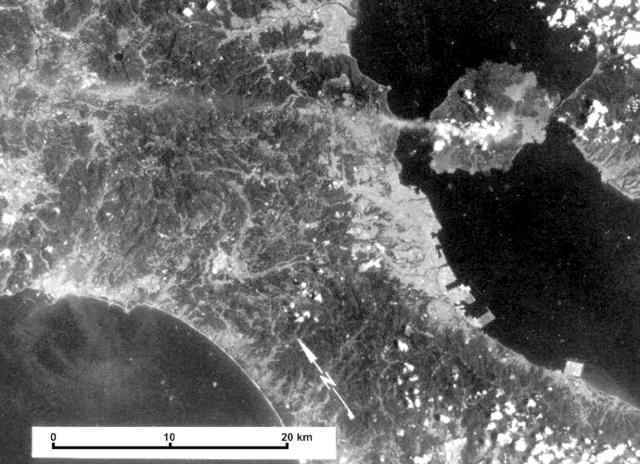Report on Aira (Japan) — April 1985
Scientific Event Alert Network Bulletin, vol. 10, no. 4 (April 1985)
Managing Editor: Lindsay McClelland.
Aira (Japan) Vigorous explosions; pyroclastic flow
Please cite this report as:
Global Volcanism Program, 1985. Report on Aira (Japan) (McClelland, L., ed.). Scientific Event Alert Network Bulletin, 10:4. Smithsonian Institution. https://doi.org/10.5479/si.GVP.SEAN198504-282080
Aira
Japan
31.5772°N, 130.6589°E; summit elev. 1117 m
All times are local (unless otherwise noted)
Activity remained at a high level in April, when 37 explosions were recorded, as compared to 35 in February and 54 in March. An explosion on 9 April at 1827 ejected a plume to 4 km above the crater, and was followed by 40 minutes of continuous ash emission and volcanic lightning. A small pyroclastic flow moved down the SW flank to about 600 m elevation. In the city of Kagoshima, ashfall began at 1840 and continued until around 0200 the next day. In the 24 hours beginning at 0900 on the 9th, ashfall at the Kagoshima Observatory was 1,608 g/m2, the largest daily total since measurements of ash deposits started in April 1969.
Another event of the same type occurred 13 April at 0722. The explosion earthquake was followed by continuous tremors, which gradually changed into a swarm of B-type earthquakes. Lapilli up to 1 cm in diameter fell on the foot, where four car windshields were cracked. On 3 May, Space Shuttle astronauts photographed a whitish, relatively diffuse plume that extended at least [50] km from Sakura-jima (figure 12).
 |
Figure 12. Photograph of Sakura-jima taken by Space Shuttle astronauts on 3 May 1984 (STS51B-52-74). A plume extends more than 50 km NW. Courtesy of Charles A. Wood. |
Geological Summary. The Aira caldera in the northern half of Kagoshima Bay contains the post-caldera Sakurajima volcano, one of Japan's most active. Eruption of the voluminous Ito pyroclastic flow accompanied formation of the 17 x 23 km caldera about 22,000 years ago. The smaller Wakamiko caldera was formed during the early Holocene in the NE corner of the caldera, along with several post-caldera cones. The construction of Sakurajima began about 13,000 years ago on the southern rim and built an island that was joined to the Osumi Peninsula during the major explosive and effusive eruption of 1914. Activity at the Kitadake summit cone ended about 4,850 years ago, after which eruptions took place at Minamidake. Frequent eruptions since the 8th century have deposited ash on the city of Kagoshima, located across Kagoshima Bay only 8 km from the summit. The largest recorded eruption took place during 1471-76.
Information Contacts: JMA, Tokyo; C. Wood, NASA, Houston.

